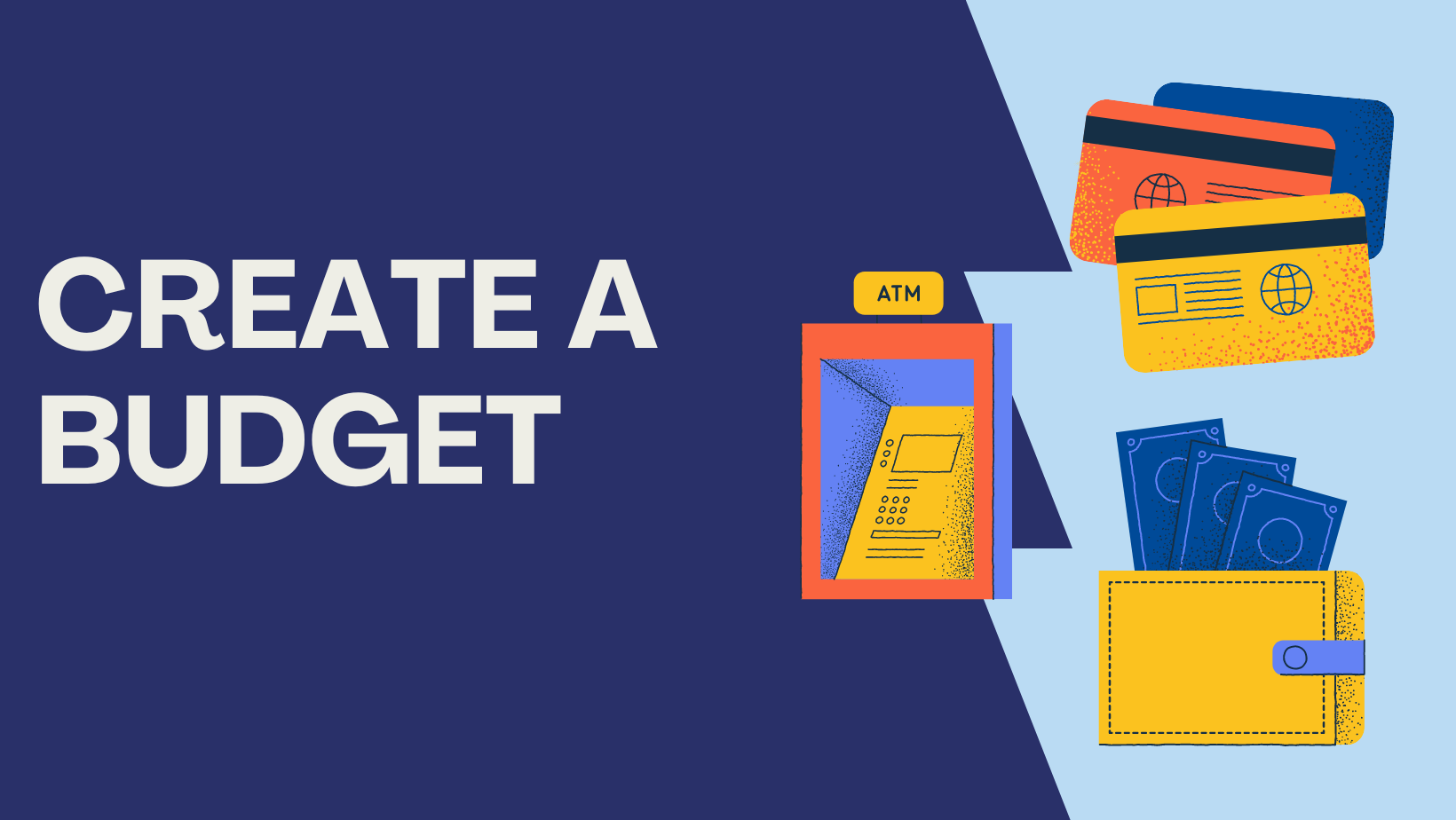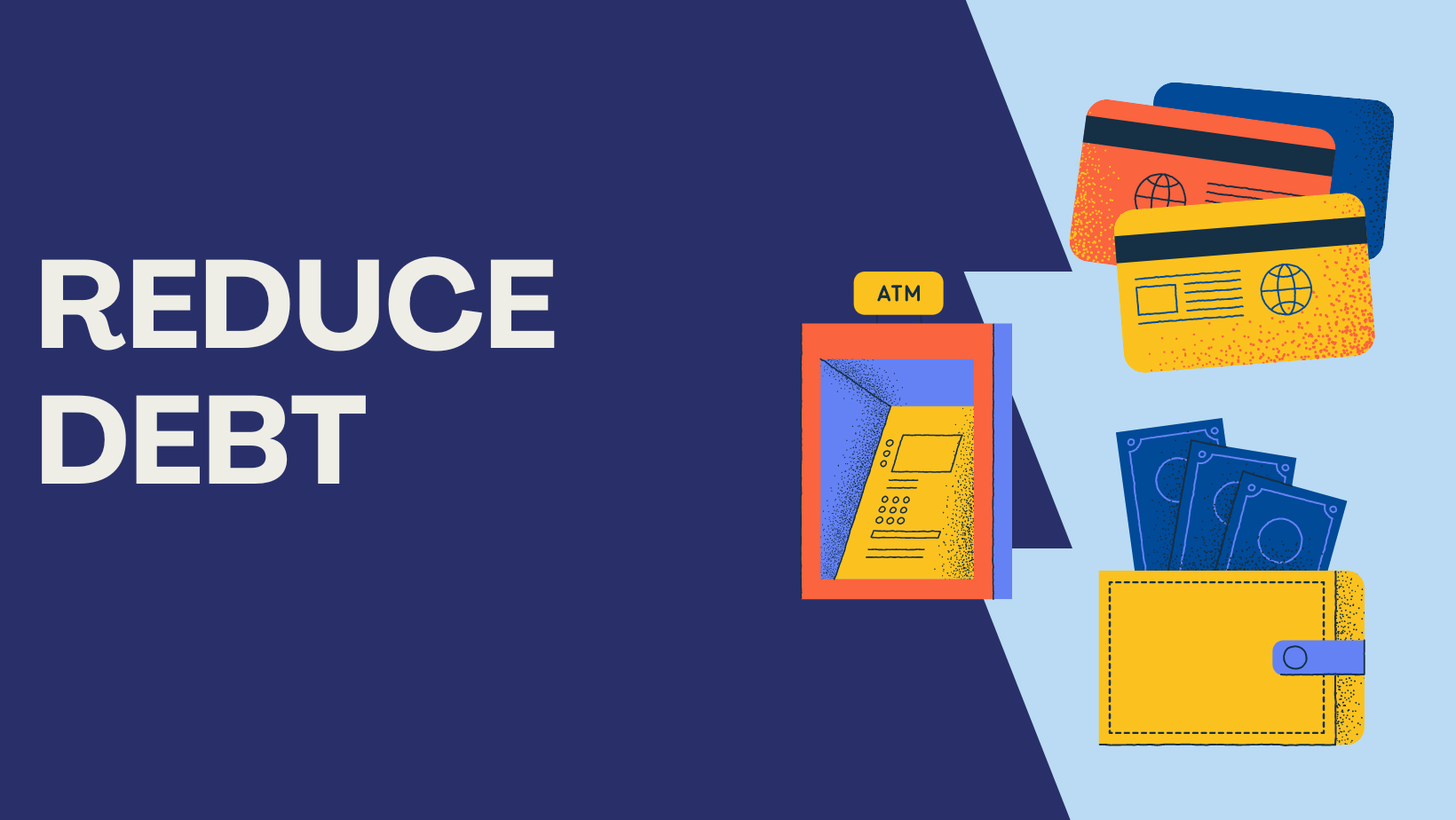Money-Making Mastery: Proven Strategies for Financial Success

You’ve come to the perfect place if you’re a millennial who wants to organize your finances. The seven most effective financial advice for millennials in 2023 will be provided in this post. This advice can help you get your finances in order and position you for long-term financial success, from setting up a budget and saving money to investing and paying off debt. This advice is useful and appropriate at any stage of life, regardless of how far along you are in your profession. So, continue reading if you’re ready to get financial control and create the future you want!
1) Create a budget

A budget is an essential tool for handling your money and preventing debt and overspending.
Starting a budget is the first and most important financial advice for millennials. A budget is a plan for every dollar you have, and it aids in your decision-making over how much to save and where to spend it. There are other ways to budget, including the envelope approach and the 50/30/20 rule. Find a strategy that works for you and use it consistently. You can take charge of your money and prevent overspending and debt by creating a budget.
Most people require a means of tracking their monthly financial activities. A budget can give you a sense of financial control and make it simpler for you to save money for your objectives. Finding a financial tracking system that works for you is the trick. You can make a budget with the help of the next stages.
Step 1: Calculate your net income
Your net income serves as the cornerstone of an efficient budget. Your take-home pay is the sum of your income or salary less tax and employer-sponsored benefits like retirement plans and health insurance. Focusing on your gross pay instead of your net pay may drive you to overspend because you’ll believe you have more money accessible than you actually have. Keep thorough records of your contracts and compensation if you’re a freelancer, gig worker, contractor, or self-employed to help manage erratic revenue.
Step 2: Track your spending
Being financially successful requires spending less than you make and saving the difference.
Living within your means is essential if you want to succeed financially. This entails figuring out how to spend less than you make and saving the difference. While it could be alluring to invest in the newest technology or take a costly vacation, these kinds of expenditures can quickly mount up and deplete your money. Instead, make an effort to concentrate on your long-term financial objectives and make wise financial decisions that are in line with them.
Finding out where your money is going comes after determining how much you have coming in. You may find out what you are spending the most money on and where it would be easiest to cut costs by keeping track of and classifying your expenses.
List your fixed expenses first. These are typical monthly expenses like utility and car payments, rent or mortgage payments, and so forth. Next, make a list of your variable expenses, which include things like groceries, gas, and entertainment which could differ from month to month. You might find opportunities to make savings in this region. Since credit card and bank statements frequently itemize or group your monthly expenses, they are good places to start.
Whatever is available, such as a pen and paper, a smartphone app, or online budgeting spreadsheets or templates, should be used to keep track of your daily spending.
Step 3: Make sensible objectives
Make a list of your short- and long-term financial goals before you begin sorting through the data you’ve gathered. Short-term objectives, which can be completed in one to three years, might include things like creating an emergency fund or reducing credit card debt. Long-term objectives like retirement planning or funding your child’s school may take decades to accomplish. Although your goals don’t have to be unchangeable, knowing what they are can inspire you to keep to your spending plan. For instance, if you know you’re saving for a vacation, it might be simpler to reduce spending.
Step 4: Create a plan
The difference between what you really spend and what you wish to spend is where everything comes together. To estimate your spending over the next few months, use the list of variable and fixed expenses that you have established. Then contrast that with your priorities and net income. Consider establishing explicit, attainable spending caps for every expense category.
You could decide to further segment your spending by dividing it into wants and needs. Gasoline, for instance, is considered a need if you commute to work every day. However, a monthly music subscription might be considered a want. This distinction becomes crucial when you’re trying to figure out how to reroute money toward your financial objectives.
Step 5: Modify your expenditures to be within your means
You can now make any required modifications so that you don’t overspend and have money to go toward your goals after documenting your income and spending. The first place to make cuts should be toward your “wants.” Can you watch a movie at home instead of going to the movies? If you’ve already made adjustments to your spending on wants, pay particular attention to your monthly payment spending. A “need” may, upon closer examination, only be a “hard to part with.”
If your calculations still don’t make sense, consider modifying your fixed expenses. For instance, may you save more money by looking around for a better deal on homeowners’ or auto insurance? Large trade-offs are involved in such choices, so carefully consider your options.
Keep in mind that even modest savings can add up to a sizable sum. Making small adjustments over time can add up to a surprising amount of extra money.
Step 6: Consistently review your budget.
Once your budget is established, it’s crucial to regularly check it and your spending to make sure you are remaining on track. There aren’t many things in your budget that are certain. For example, your costs might vary, you might get a raise, or you might attain a goal and wish to set new goals. Whatever the reason, establish the practice of routinely reviewing your budget by using the preceding procedures.
2) Reduce Debt

If you merely make minimal payments on high-interest debt, like credit card debt, it can be difficult and take years to pay it off. Prioritize paying off the debts with the highest interest rates first.
It’s crucial to pay off debt as quickly as you can if you have any. If you merely make minimal payments on high-interest debt, like credit card debt, it can take years to pay it off. Instead, attempt to prioritize paying off your debts with the highest interest rates first. You might also think about combining your debt to make it simpler to handle. You’ll have more money for savings and investing if you pay off your debt.
1. Create a budget to keep tabs on your spending.
You may keep track of your income and expenses as well as the things you spend your money on by using a budget. You may remove or decrease unneeded spending by becoming more mindful of your income and expenses.
2. Avoid accruing extra debt.
Prior to taking on any additional debt, work toward paying down the debt you now have. Avoid making any pointless purchases. Making unneeded expenditures while you still have debt to pay off will make it harder to manage your debt.
3. Pay all of your bills on schedule and in full.
You can prevent excessive interest rates and late penalties by making complete and timely payments on your invoices. In order to avoid paying more in interest and fees if you are unable to make full payments, try to pay more than the minimal amount required.
4. Examine your bills thoroughly.
Verify the accuracy and consistency of your rates when you receive your bills and statements. Call your lender to make the necessary corrections if there are mistakes or if your rates increased suddenly.
5. Initially, pay off your high-interest obligations.
If you have a number of debts to settle, paying off the ones with the highest interest rates and fees first will lower your overall debt over time.
6. You should have fewer credit cards.
Consider managing your debt by using just a few credit cards. Verify that they offer the most affordable charge.
7. When combining your debts, look for the lowest interest rates possible.
You can manage your bills more easily by obtaining a debt consolidation loan from a bank or credit union since you only have to make one payment to the bank or credit union rather than many payments to all of your present lenders. Shop around for the best rate before consolidating because the bank or credit union may frequently offer you a lower interest rate than the rates on the loans you owe.
8. Talk to your creditors about payment arrangements.
Speak with the businesses you owe money to directly. They might agree to cut monthly payments and create a payback schedule that is more suitable for your financial situation.
9. Consult with credit counselors
Take into account meeting with a credit counselor if you require assistance in creating a plan for repaying your debt. It might be a fraud, so be wary of counselors that promise to pay off all of your debt rapidly for a small charge.
10. Stay on guard
After you’ve lowered or paid off your obligations, be sure to take precautions to avoid taking on new debt. Consider gradually replacing credit cards with debit cards or cash.
3) Develop an emergency fund

An emergency fund, which can shield you from financial ruin, is a savings account set up expressly for unforeseen costs.
A savings account for unforeseen costs like auto repairs or medical bills is known as an emergency fund. If you don’t have an emergency fund set up, these kinds of costs could have a crippling financial impact on you. Try to save enough cash to cover three to six months’ worth of living expenses in your emergency fund. This will enable you to weather any upcoming financial turbulence.
How to Start an Emergency Fund
1. Identify the amount you need to save.
Finding out how much you need to save is the first step. This will rely on the particular requirements and conditions of your household. Aim for 3-6 months’ worth of living expenses as a general guideline. Therefore, if your monthly expenses were PHP 50,000, your savings target would be PHP 150,000 to PHP 300,000.
2. Set up a budget and begin saving.
Making a budget and starting to set aside money each month is the next step after determining how much money you need to save. Even if you’re only able to put aside a small amount each month, it will all add up eventually! A wonderful approach to guarantee that money is always going into your emergency fund is to automate your savings by setting up a direct deposit from your paycheck into your savings account.
3. Maintain your emergency savings in a different account.
Keep your emergency fund separate once you’ve begun saving; ideally, in a high-yield savings account or a short-term certificate of deposit (CD). This will assist you in resisting the need to use your funds for things other than emergencies. Additionally, keeping your emergency fund in a separate account helps make sure that you have access to it when you need it most.
4. When you have additional funds, make additional deposits.
Even while it could be alluring to spend additional money on a new outfit or trip, it’s always a wise choice to add more money to your emergency fund. You never know when you might use that reserve to cover unforeseen costs, such as auto repairs or hospital fees. Additionally, studies have shown that while material possessions might temporarily make us happy, financial security can bring about a far longer-lasting sense of well-being.
5. Review your progress often, and make necessary adjustments to your savings strategy.
Regularly assessing and modifying your savings strategy can give you confidence that you have enough money to cover any unforeseen costs. A small amount of time set aside every few months can save major problems later on.
4) Contribute to retirement accounts

Compound interest can be used to your advantage and allow you to gradually increase your savings by investing in retirement accounts like a 401(k) or IRA.
Millennials frequently believe that retirement is far off. However, the sooner you begin to save for retirement, the better. You can take advantage of compound interest by investing in retirement accounts, such a 401(k) or IRA, which might help your savings increase dramatically over time. Your long-term financial success can be significantly impacted by every gift, no matter how small.
Tips to Help You Boost Your Retirement Savings
Take into account the following advice to increase your savings and pursue the retirement you desire, regardless of your current stage of life.
1. Try to start right away.
Start saving as much as you can right immediately, especially if you’re just starting to set money aside for retirement, and provide compound interest—the capacity of your assets to produce earnings that are then reinvested to produce their own earnings—a chance to work in your favor. The earlier you can begin, the better off you’ll be, according to Greenberg.
2. Make contributions to your 401(k) plan.
If you are qualified and your workplace offers a typical 401(k) plan, you might be able to contribute before taxes, which might be a big benefit. Let’s say you want to put $100 down each pay period and are in the 12% tax bracket. Since that money is deducted from your paycheck prior to the application of federal income taxes, only $88 will be lost from your take-home pay (plus the amount of applicable state and local income tax and Social Security and Medicare tax). If your employer’s 401(k) plan also includes a Roth 401(k) feature, which uses income received after taxes rather than pre-tax funds, you should take into account your income tax bracket in retirement to help you determine whether this is the best option for you. As a result, you can invest a greater portion of your income without feeling it as much in your monthly budget.
3. If you’re 50 or older, take advantage of catch-up donations.
Because yearly contributions to IRAs and 401(k) plans are capped, it’s crucial to start saving as early as possible. the positive news You become eligible for catch-up contributions to IRAs and 401(k)s as of the calendar year in which you turn 50.
4. Automatically save money
Make your retirement payments automatic each month, and you’ll have the chance to potentially expand your nest egg without having to think about it, advises Greenberg. You’ve definitely heard the saying “pay yourself first.” The Merrill Automatic Investment Plan, which invests funds automatically, allows you to automate your choice of investments.
5. Stash extra funds
Extra cash? Don’t just blow it all. Increase your donation percentage each time you get paid more. At least 50 percent of the additional funds should go into your retirement plan account. And while it can be tempting to spend that tax refund or bonus money on a vacation or a new designer handbag, Greenberg advises against doing so. Instead, she advises, “don’t treat those extra monies as found money.” She encourages that you treat yourself to something modest and utilize the remaining to help make bigger jumps toward your retirement goal.
5) Make early stock market investments

Early stock market investment can greatly increase your wealth through compound interest.
As you endeavor to generate more money, investing is a tried-and-true approach to make your money work for you. Warren Buffett, a renowned investor, characterized investing as “giving up consumption now to enable consuming of greater amounts in the future.”
You can be able to raise your money several times over with time if you constantly invest your money. Because of this, it’s crucial to start investing as soon as you have any money set aside for the purpose. Furthermore, a fantastic place to start is the stock market.
You can begin whether you have $1,000 saved up or can simply afford an extra $25 per week. Remember that there is a lot you can and should learn about stock investing if you want to succeed financially.
KEY TAKEAWAYS
- Investing is the act of putting money or capital into a project in the hope of earning more money or making a profit.
- Investing, as opposed to consuming, puts money to work so it can increase over time.
- Losses are a possibility with investing, though.
- No matter their level of knowledge, investors frequently use the stock market to make long-term investments.
- Beginner investors have several options, including hiring professional advisers, using robo-advisors to handle their portfolios, and doing it yourself.
Steps to Get Started
1. Establish Your Risk Tolerance
What is your risk tolerance, or how willing are you to take the potential of losing money if you invest? Stocks can be divided into a number of categories, including value stocks, aggressive growth stocks, high capitalization stocks, and small cap stocks. There are varying degrees of risk with each. You can focus your investment efforts on the stocks that compliment your risk tolerance once you’ve established it.
2. Choose your investment objectives.
Determine your investment objectives as well. An online broker will inquire about your investing objectives (and the previously indicated level of risk that you are willing to take) when you open a brokerage account.
- An investment objective can be to raise the amount of money in your account if you’re just starting out in your profession. If you’re older, you might desire to make money in addition to building and safeguarding your wealth.
- Your investment objectives can be to save for college, buy a house, or support your retirement. Objectives might evolve throughout time. Just be careful to identify them and revisit them from time to time so you can stay focused on accomplishing them.
3. Establish Your Investment Style
While some investors like to set it and forget it, others desire to actively manage their money. Though your choice could vary, choose a strategy to get going.
- You could manage your investments and portfolio on your own if you are confident in your knowledge and abilities in the field. You are able to invest in stocks, bonds, exchange-traded funds (ETFs), index funds, and mutual funds using traditional internet brokers like the two described above.
- You can get assistance from a seasoned broker or financial advisor with your investment choices, portfolio management, and portfolio adjustments. This is a wonderful choice for novices who recognize the value of investing yet may desire the assistance of a professional.
- An automated, hands-off alternative to working with a broker or financial advisor, robo-advisors are frequently less expensive. Your goals, level of risk tolerance, and other information are collected by a robo-advisor program, which then automatically invests for you.
4. Select a Suitable Investment Account
After enrolling in a plan, automatic contributions are made at the level you specify. On your behalf, employers could make matching donations. Your account balance grows tax-deferred, and your donations are tax-deductible. This is an excellent approach to increase your investment returns with little work. Additionally, it can teach investors the discipline of consistent investing.
5. Discover How to Diversify and Lower Risk
Understanding diversification in investments is crucial. Simply said, investing in a variety of assets, or diversification lowers the danger that the performance of one investment will materially impede the return on your entire investment portfolio. It could be interpreted as slang for avoiding putting all of your money eggs in one basket.
When investing in individual equities, diversification might be challenging if your budget is tight. For instance, you might only be able to invest in one or two businesses with just $1,000. There is a higher risk as a result.
Mutual funds and ETFs can be useful in this situation. The majority of stocks and other investments are often held by both types of funds. As a result, they offer greater diversification than a single stock.
Put Money Aside for Major Purchases and Special Occasions
You can reach your financial objectives and lessen stress by making plans in advance for significant expenditures and special occasions.
It might be difficult to save money for significant purchases and life events like a wedding or a down payment on a property. However, it’s important to begin saving and planning as soon as you can. Making a plan to achieve certain financial goals is one method to achieve this. This can entail setting up a budget, eliminating wasteful spending, or looking for ways to boost your income. You might also want to think about opening a unique savings account just for these kinds of costs. Your significant expenditures and special occasions will be less expensive and stressful if you plan ahead and save money.
There is no one-size-fits-all method of financial planning, whether it’s for saving for a wedding, a new house, or even to create and maintain excellent saving habits. But with these simple suggestions, you may position yourself for financial success and have faith in the choices you make.
